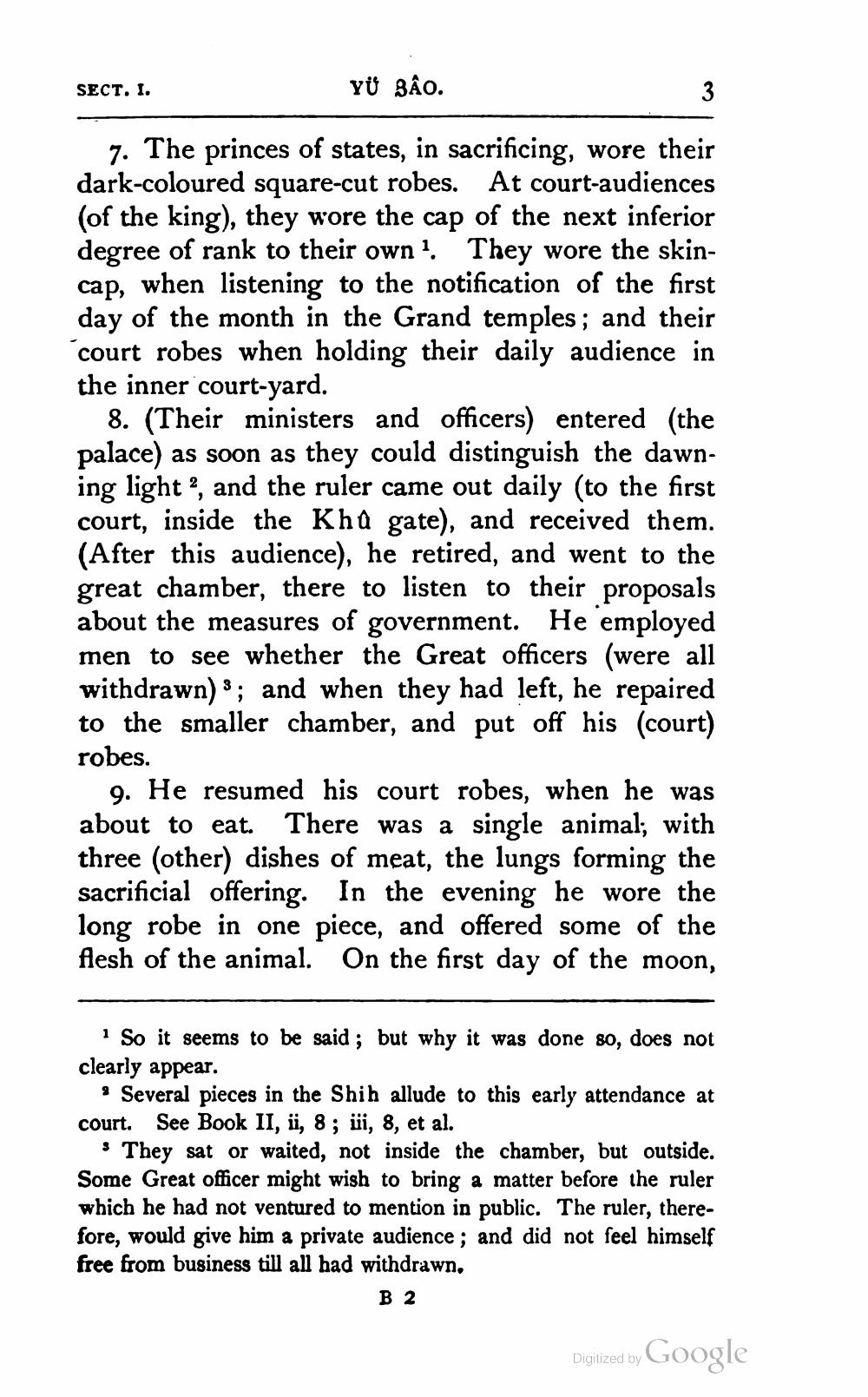________________
SECT. I.
YỦ BẢO.
7. The princes of states, in sacrificing, wore their dark-coloured square-cut robes. At court-audiences (of the king), they wore the cap of the next inferior degree of rank to their own! They wore the skincap, when listening to the notification of the first day of the month in the Grand temples; and their court robes when holding their daily audience in the inner court-yard.
8. (Their ministers and officers) entered (the palace) as soon as they could distinguish the dawning light ?, and the ruler came out daily (to the first court, inside the Khů gate), and received them. (After this audience), he retired, and went to the great chamber, there to listen to their proposals about the measures of government. He employed men to see whether the Great officers (were all withdrawn) *; and when they had left, he repaired to the smaller chamber, and put off his (court) robes.
9. He resumed his court robes, when he was about to eat. There was a single animal; with three (other) dishes of meat, the lungs forming the sacrificial offering. In the evening he wore the long robe in one piece, and offered some of the flesh of the animal. On the first day of the moon,
So it seems to be said ; but why it was done so, does not clearly appear.
. Several pieces in the Shih allude to this early attendance at court. See Book II, ï, 8; ü, 8, et al.
* They sat or waited, not inside the chamber, but outside. Some Great officer might wish to bring a matter before the ruler which he had not ventured to mention in public. The ruler, therefore, would give him a private audience; and did not feel himself free from business till all had withdrawn,
B 2
Digitized by Google




